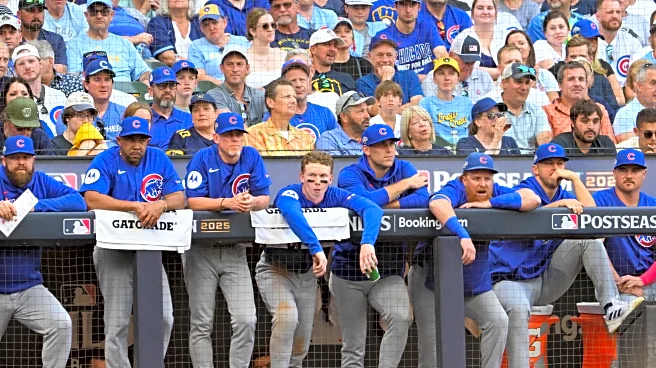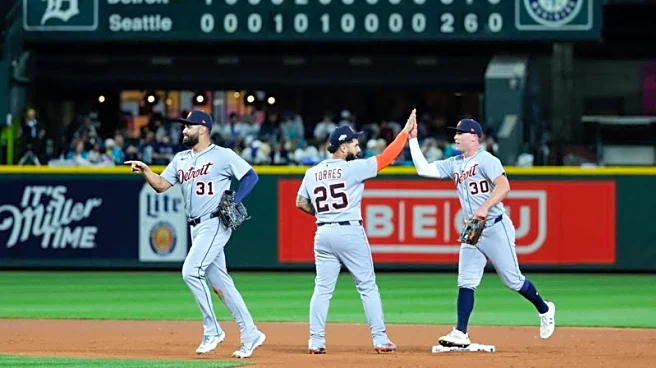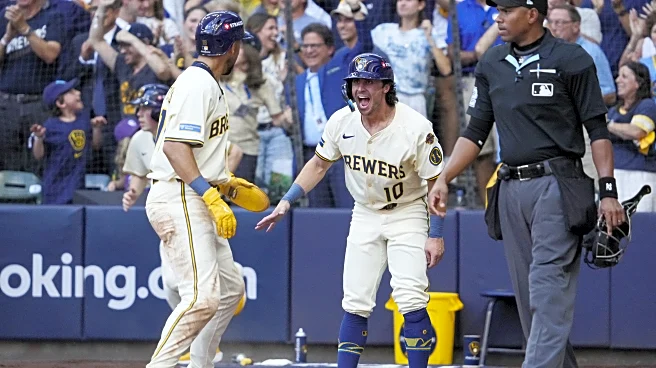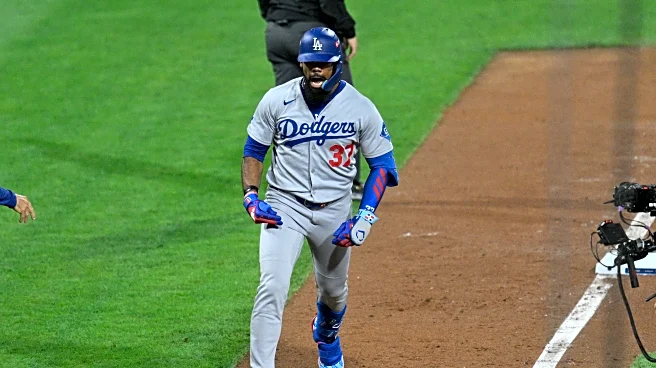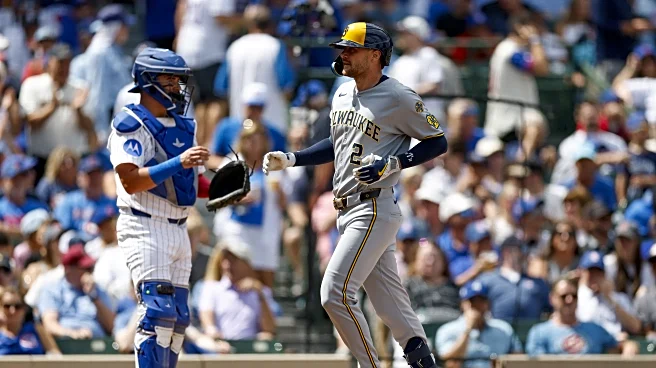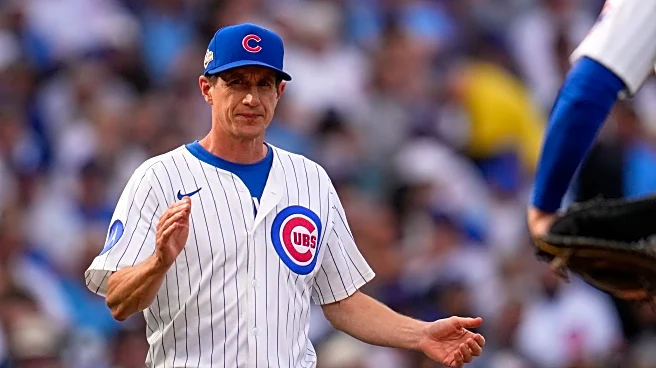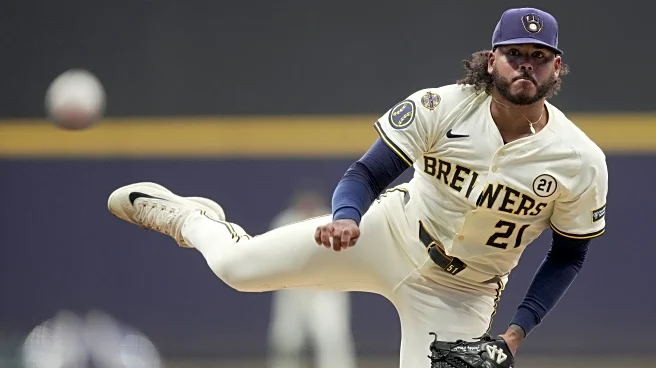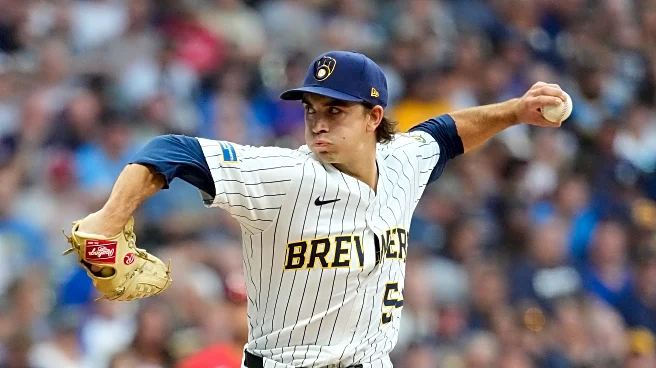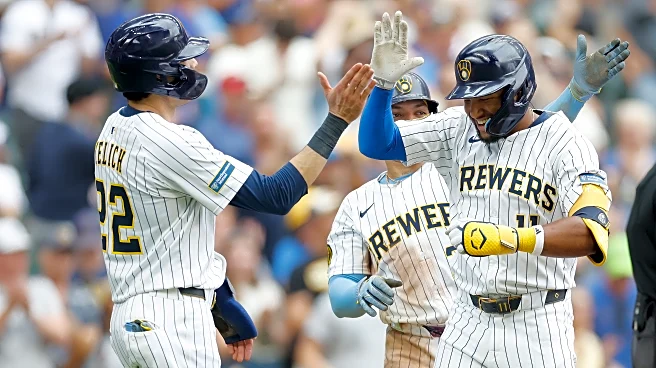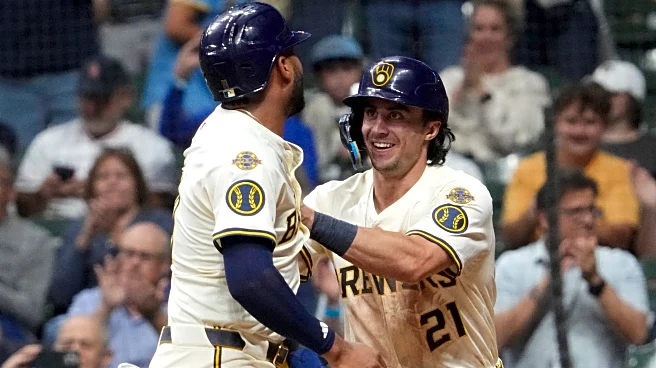Despite a nine-run barrage in the first two innings of yesterday’s NLDS opener, the story out of Milwaukee this morning is Jackson Chourio’s right hamstring. Chourio tweaked it while legging out his third
hit of the game in the bottom of the second inning (yes, you read that right) and was promptly pulled in favor of Isaac Collins.
How severe is the injury? If you believe Brewers manager Pat Murphy, it’s “real scary” and “devastating” — especially because this is the same hamstring that caused Chourio to miss almost the entire month of August. If you believe Chourio himself, he wanted to stay in the game, and the move was “more precautionary.” Either way, the coming days will certainly shed more light on exactly how much time, if any, the Brewers’ second-year outfielder will end up missing.
The Brewers’ victory has been slightly overshadowed by the specter of the injury, which is somewhat understandable. Chourio is a spark plug who has been an integral part of this Brewers team, and Milwaukee is a better team with him in the lineup. Milwaukee also ripped off 14 straight wins in August while Chourio was on the IL, so you can’t really argue the Brewers are dead in the water without him. Their style of play is well-suited, perhaps more than any other team in this year’s playoffs, to survive the loss of one of their stars.
That point brings me to what I really want to talk about in the wake of Game 1 of the NLDS. Yesterday’s game proved that the Brewers’ small-ball style is one that can work in the playoffs, with or without Chourio.
This needs to be said, because a lot of the conversation surrounding the Brewers (at least in the national media) openly questioned whether their offense would remain viable in October. Milwaukee actually scored the most unearned runs in baseball this year (101, 18 more than second-place Miami and roughly one-eighth of their total runs scored). Perhaps unsurprisingly, they were also the team helped most by bad defense. The Brewers don’t hit a lot of home runs, either — 22nd in the league, smack dab between the Chicago White Sox and Cincinnati Reds. Over the last 10 years (2015-2024), the league-wide strikeout rate has jumped from 22.3% in the regular season to 25% in the playoffs. To that end, the prevailing thought process has been that teams who rely on the long ball win in October because it’s harder to stack two or three baserunners in any given inning than it is to hit one home run.
One only needs to have watched the first two innings of yesterday’s game to understand why the Brewers are very likely an outlier. They often score runs by stringing together hits, but that’s a feature, not a bug. Just because the Brewers are a team of “Average Joes” doesn’t mean they’re not also statistically great at getting on base. Six qualifying Brewers (Christian Yelich, Brice Turang, Chourio, Sal Frelick, William Contreras, and Caleb Durbin) have an OPS over .720. Milwaukee’s .332 team OBP is the second-best in baseball, one point below the Blue Jays’ .333. They’re also tied for second in batting average with the Phillies. In order to survive better pitching and fresher arms in the playoffs, you need to be really good at getting on base, which the Brewers are.
So, why will the Brewers’ ability to get on base continue to translate to the postseason? One major factor is plate discipline. Not only does Milwaukee swing less than any other team (45.4% of the time), they’re also tied for the best chase rate in baseball (25.2%) and the second highest “meatball swing percentage.” This Brewers team doesn’t swing at bad pitches and usually swings at good pitches.
For an example, look at Blake Perkins’ RBI single that chased Cubs’ starter Matthew Boyd from yesterday’s game. Perkins worked the count to 3-2, then fouled off four more pitches that were all pretty close to the zone (certainly close enough to swing at with two strikes). The eleventh pitch of the at-bat was a changeup down in the zone. It wasn’t a bad pitch, but Perkins was ready — slapping it into center field for a base hit. The Brewers’ offensive identity is simple: don’t strike out, don’t swing at bad pitches, put the ball in play and see what happens. If you put enough balls in play, one or two are bound to find a gap.
Baseball is also a sport with a massive mental component. To that end, another positive derived from playing small-ball is the demoralizing psychological effect of hits piling up. If a pitcher misses his spot, or gets beat and gives up a home run (see: Michael Busch’s leadoff homer last night), it doesn’t take much of a mental leap for said pitcher to chalk it up to a mistake. Brewers starter Freddy Peralta didn’t allow another run until the sixth inning, striking out nine in the process. If you’re giving up hit after hit, it’s much easier to get rattled.
That extends to the whole team — yesterday’s broadcast kept cutting to Cubs’ manager Craig Counsell, whose facial expressions landed somewhere between “well, maybe I shouldn’t have started Matthew Boyd on three days of rest” and outright dejected during the Brewers’ six-run first inning outburst.
Another example of this is the Nico Hoerner error on a Sal Frelick grounder in the first inning. Hoerner is one of the best defensive infielders in the league, and it was a play he should have (and normally would have) made. However, the inning was already snowballing out of control. Milwaukee had scored two runs on three consecutive doubles and had runners on first and second with only one out. Frelick hit a weak dribbler at Hoerner, who didn’t have much time to decide whether he wanted to try and get the force-out at second base or take the second out at first. Hoerner pulled his glove up just a bit early, Contreras came in to score, and the Brewers extended their lead to two runs.
Betting on Hoerner to make an error is a fool’s errand, but high-pressure situations like that are statistically slightly more likely to lead to a mistake. Research done by James Gentile for SB Nation’s Beyond the Box Score back in 2013 concluded that the longer a game goes on, the more likely an error is to occur. Extra innings are the mostly likely situation in which a fielder will make an error (occurring on 2.1% of all chances), while the first three innings are least likely.
One could argue that the reason for this is fatigue, but that doesn’t seem all that convincing when discussing in-shape, conditioned professional athletes. The other explanation is mental. Clutch situations more often occur late in games — the pressure of high-leverage situations might lead to an athlete making a mistake that they wouldn’t normally make. The most famous (and extreme) example of this is Rick Ankiel, who completely forgot how to throw strikes with a six-run lead in the 2000 NLDS.
At the moment of Hoerner’s error, the Cubs were only down 2-1 and the game was still in reach. If he had been able to get the force-out at second, or turn a double play (unlikely with the speedy Frelick running) it might have swung the momentum back the Cubs’ way. Instead, Hoerner missed the grounder and the inning snowballed. Professional athletes are generally much better in high-pressure situations than you or I will ever be, but it’s still worth mentioning that his first career postseason appearance was last week against the Padres — he’s not a playoff veteran. By not striking out, by putting the ball in play, the Brewers force their opponent to make a play — which also partially explains why the Brewers lead the league in unearned runs.
The mental aspect of small-ball was also visible in the Brewers’ game plan yesterday against Boyd. As we’ve established, one of Milwaukee’s strengths this season has been plate discipline. Other than Perkins’ at-bat, you wouldn’t have been able to tell from the first inning of yesterday’s game.
Chourio started the bottom of the first by taking two balls, then a strike, before grounding a double down the left-field line. The next batter, Brice Turang, jumped on the first pitch (a middle-in strike). Contreras also hit a double on the first pitch. Yelich swung at the first pitch he saw. So did Frelick and Durbin before Perkins chased Boyd from the game. The game plan was clearly to rattle Boyd, to jump on him early and see if the Brewers could get a couple balls to drop. Ultimately, said plan was a rousing success that swung the game’s momentum back in favor of the Brewers.
Maybe Chourio will end up missing some time. That would hurt. He’s an important part of the team and clubhouse and the Brewers are better with him out there. Milwaukee may very well have a few games this October where they only score a couple of runs — a thought that is kind of scary already, and would be a lot scarier had their pitching not been so impressive (second-best team ERA) in the regular season.
But then again, everything stated in this article about the Brewers’ offensive identity and gameplan remains true with or without Chourio. They have strength in numbers — the main replacement for Chourio in the starting lineup will mostly likely be Isaac Collins, whose season-ending cold stretch dropped his season-long OPS down to *checks notes* .779. Milwaukee’s offense doesn’t need Chourio like the Yankees need Aaron Judge or the Mariners need Cal Raleigh.
Even if Chourio has to take a few games off, the Brewers are equipped to survive without him. To do so, they’ll need to continue to play their brand of baseball — getting runners on base, putting the ball in play and seeing what happens. In addition, the Brewers were 22nd in home runs this year, but 49 home runs (roughly a home run every three games) ahead of the last-place Pirates. That’s not nothing. It’s not like the Brewers never hit home runs, and home runs are more valuable with runners on base.
Milwaukee just has to scrap their way to two more wins. After that, anything can happen. Welcome to October, and see you tomorrow for Game 2.
If you liked this article and want to read more of our NLDS coverage, you’re in luck! The staff here at BCB have been working overtime to bring you content centered around this year’s playoffs. Recent articles have included:
- Jason’s great recap of yesterday’s Game 1 against Chicago.
- Harrison’s breakdown of how the Brewers and Cubs match up in his NLDS preview.
- Paul’s preview for each of the Division Series.
- An open thread available to discuss other Division Series games.

